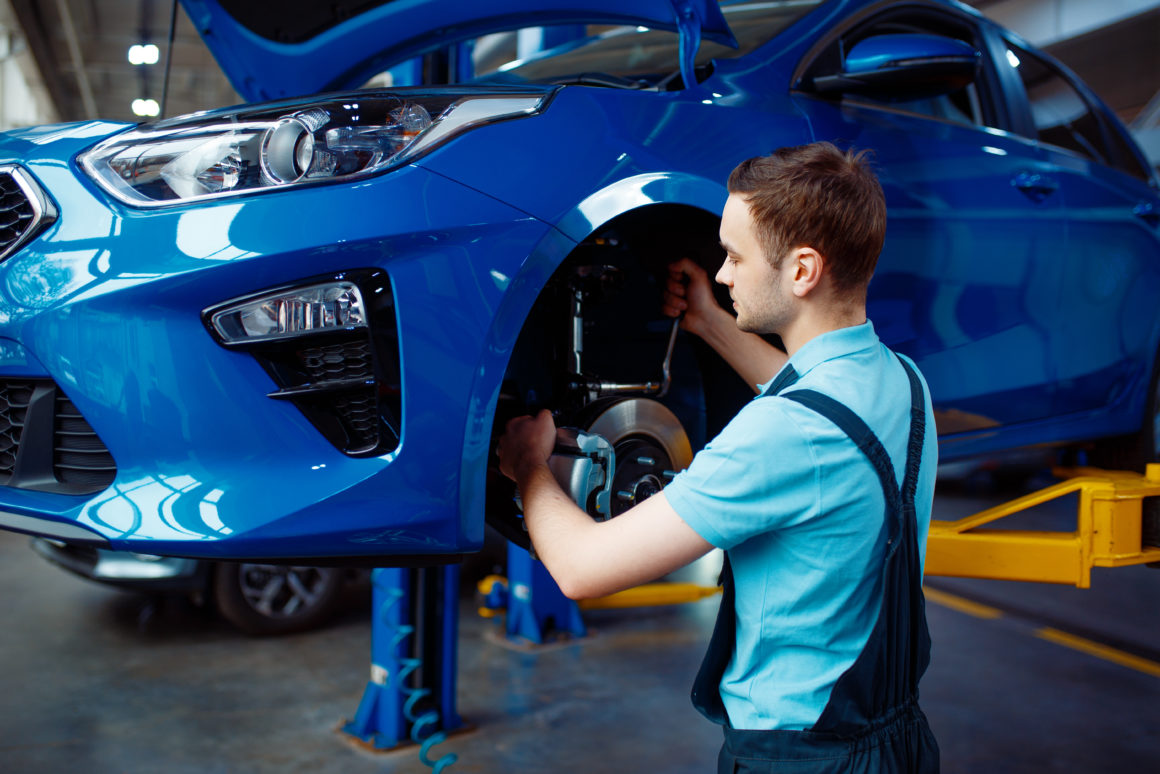The average lifetime of a car today is 11.5 years. That’s the longest ever, a testament to technological advances made by carmakers. In over a decade, a few things are bound to go wrong with a complicated piece of machinery like a car. Some of the issues you run into are easy fixes and some may require a little assistance from a certified car repair shop. The average car owner will spend $300 to $500 per year on car repairs. That can quickly add up over the years.
Here are the ten most common car problems that car owners run into:
1. Car Battery Dies
We’re not just talking about running down your battery by leaving your lights on overnight. That’s an easy, albeit frustrating, fix that can be handled with jumper cables. We’re talking about actual battery replacement. The average car battery has a shelf life of 4-6 years, depending on the model. So chances are, changing your car battery is one of the first car repairs you’ll run into.
2. Tires Need Replacing
Tires take quite a beating, so they’re bound to need replacing. Experts say most quality tires should last 60-80 thousand miles. (Though they’ll wear over time regardless of use because the rubber breaks down.) Proper alignment and suspension will help prolong their life, so make sure your car is getting regular check-ups at your car repair shop to get the most out of them.
3. Water Pump Breaks
Your car’s water pump circulates coolant to keep your car from overheating. After 70,000 miles, instances of coolant leaks increase sharply. The first sign your water pump is broken is coolant seeping out of the vent hole or around the pump. While it may be possible to fix some leaks with sealant, if the pump itself is broken, it will have to be replaced entirely.
4. Gaskets and Rubber Parts Harden
Like any rubber product, gaskets will harden or break down over time. This causes them to lose efficiency and can lead to larger problems if not fixed. Though replacing gaskets may seem like a simple fix, it can be more complicated than it seems at first glance. Some engines may need to be taken apart to replace them, making the task more time-consuming and expensive. Other rubber parts that will harden over time include any number of hoses, valves and seals found throughout your car. Rubber breaks down faster when exposed to heat and sun, but for the most part wear and tear is unavoidable after 10 or so years.
5. The Clutch Breaks
Manual transmissions will typically last as long as your car does. However the same isn’t true for the clutch. Depending on how tough you are on your clutch, it may need to be replaced anywhere from 30-100 thousand miles. Replacing a clutch is a laborious task, so be prepared to pay a chunk of change for repairs.
6. Automatic Transmission Fails
This is one of the most feared car repairs for good reason. Most car repair shops won’t even bother with repairs. If a transmission fails, it will likely be replaced, plain and simple. This will easily run you a bill for thousands of dollars. Most transmissions should last for the lifetime of the engine, but should and do are different matters! Instances of transmission failure steadily increase after your car hits the 60,000-mile mark. Keeping up with car maintenance and replacing transmission fluid at the recommended intervals will help keep your transmission in good shape.
7. Brake Pads Wear Down
Break pads are built to wear down. How quickly they wear will depend on your driving style and how often and how forcefully you use them. Heavier cars will also chew through brake pads faster, as well. Expect to change brake pads somewhere between 30,000 miles and 70,000.
8. Muffler and Exhaust Parts Rust
Your exhaust is exposed to corrosive liquids, both internal (gas fumes) and externally (water and the elements) which can lead to rusting and leaks. Stainless steel often lasts up to a decade or more in these conditions. However, when it does break down, it should be fixed immediately. When the exhaust leaks, it’s not only noisy; it can cause dangerous levels of carbon monoxide fumes to be released.
9. Spark Plugs Need Replacing
Spark plugs are what an engine uses to start, and therefore a pretty crucial part of a working car. Since they’re inside the engine, a lot of labour can go into replacing spark plugs, making getting them repaired at a certified car repair shop cost more than you might expect.
10. Air Conditioning Breaks Down
In the balmy summer months, many car owners would argue A/C is a necessity. When your cooling system breaks down, it’s a relatively complicated (and therefore costly) fix, which is best left to a certified car repair shop.
Protect yourself from unexpected car repairs with an extended car warranty. An extended car warranty ensures your car continues to be covered in the years when it matters most when car problems and breakdowns frequently occur. Check out Ensurall’s extended car warranty plans <LINK: http://ensurall.ca/our-plans> to learn more about purchasing a warranty for your car.

